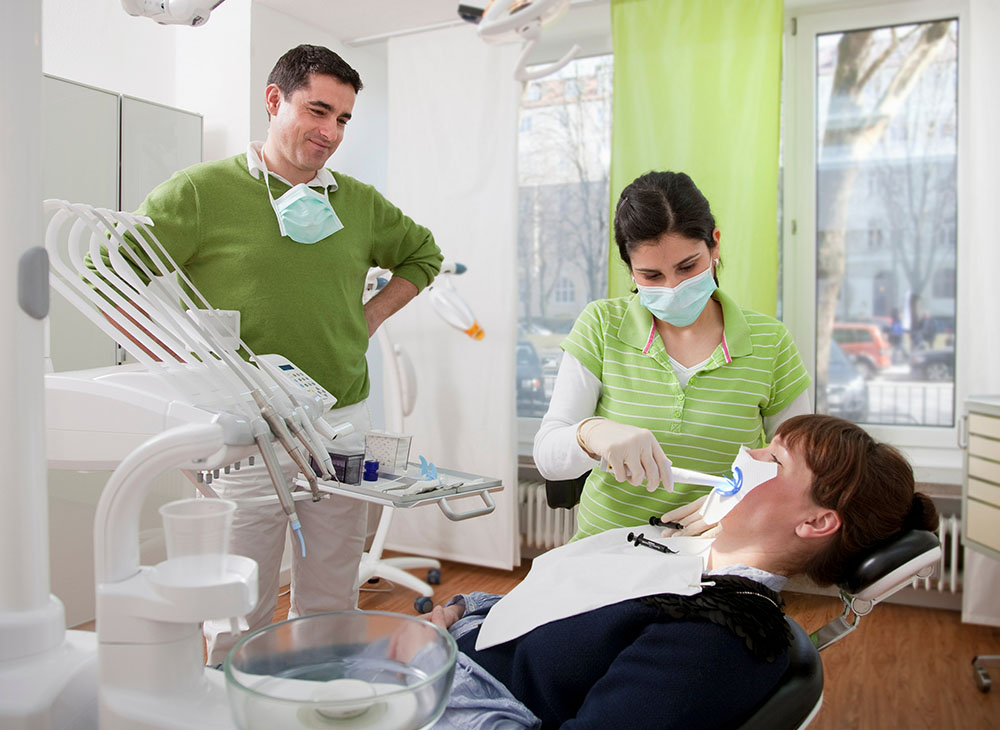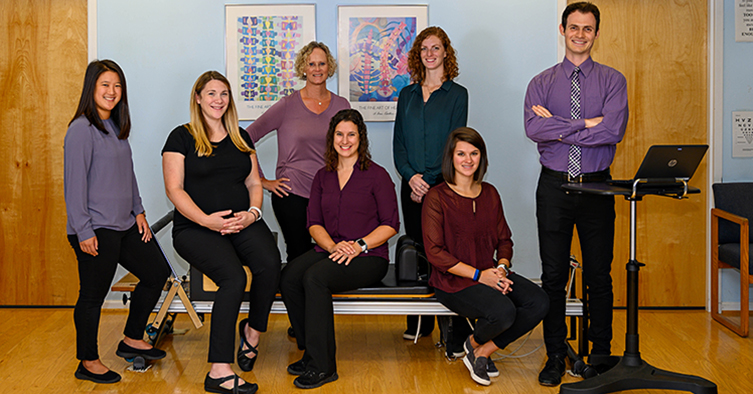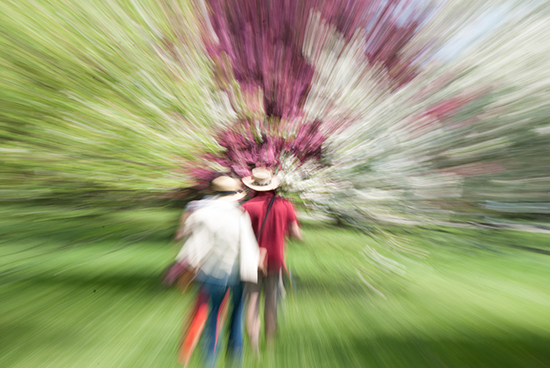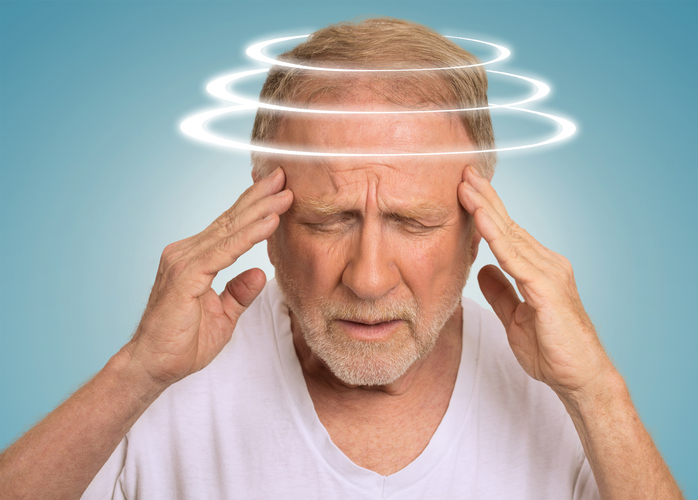

We look forward to the upcoming publication of the Phase One study and our participation in Phase Two in May 2024.
WWS Physical Therapy And Vestibular Rehabilitation
Doylestown, PA.
(215) 489-3234
Healing, Function, Recovery, Health


We look forward to the upcoming publication of the Phase One study and our participation in Phase Two in May 2024.
As a Vestibular specialist, many patients ask me how to prevent another vestibular event or a fall. Good balance comes from a healthy vestibular system, visual system, and proper input from sensory nerves and muscles. These systems work together to help us move and react, maintaining good balance.
As we age, the vestibular system changes. The hair cell neurons of the inner ear reduce in number, and the postural organs of the ear, the utricle and saccule, also decline in function. This can affect postural reactions and coordination involved in maintaining balance. Otoconia from the utricle and saccule also become more likely to break loose from these organs, causing benign paroxysmal positional vertigo (BPPV), a condition that we frequently treat in vestibular therapy.

How can we slow down the aging process to help our balance?
Exercise that includes changing surfaces to challenge your muscles and postural reactions and head movement added to exercise to make your vestibular system work harder can all improve your balance. Your vestibular therapist can teach you How to incorporate these into your regular workout.
Maintaining good health is important in aging well. Some health issues affect the vestibular system more directly than others. Hypertension affects the inner ear since the ear is susceptible to changes in blood flow. The vestibular system’s microcirculation is reduced by hypertension, which can lead to loss of function in the vestibular system. We tend to focus on the circulation to our heart and brain, but issues from reduced blood flow can also occur in the inner ear organ.
Diabetes Mellitus also affects the microcirculation of the inner ear and the peripheral nerves, sometimes causing peripheral neuropathy. Patients with diabetes are 70% more likely to have vestibular and balance deficits, so properly managing your diabetes with exercise and medication is important for good balance.
Exercise has positively affected hypertension, diabetes, circulation, sleep, and many other health factors that impact balance. A physical therapist trained in vestibular rehabilitation can examine how your balance systems are working and help you figure out how to exercise and work on your balance safely.
Wendy Webb Schoenewald, PT, OCS
WWS Physical Therapy and Vestibular Rehabilitation
Doylestown, PA.
(215) 489-3234
At the WWS Physical Therapy and Vestibular Rehabilitation clinic, Doylestown, PA., we treat many patients with a type of #vertigo, called Benign Positional Paroxysmal Vertigo, or #BPPV. BPPV is a peripheral #vestibular disorder involving the inner ear that causes spells of dizziness typically lasting less than one minute when the head is in certain head positions. And Vertigo is defined as an illusion of movement or a sense of spinning. In BPPV, vertigo is brief, lasting only a few seconds.
So, you ask – What does BPPV have to do with the Dentist’s chair? One wouldn’t think that #BPPV has anything to do with going to the dentist, but patients often have #BPPV attacks when laid back in the dentist’s chair. It’s not the dentist or hygienist that causes the attack, but it is the position that the patient is put in. Sitting or lying back in the dentist’s chair can trigger #vertigo by allowing the “crystals” in the inner ear to shift.

The mechanism causing Vertigo involves these displaced #crystals, called #otoconia, which, with treatment, we effectively return to the right chamber of the inner ear. Treatment consists in performing an #Epley maneuver by a Certified Vestibular Physical Therapist for Inner Ear disorders and Balance disorders — we lay the patient on their back while tilting their head back and maneuvering their head and body to shift the otoconia to the correct position. See the video below:
After treatment, we educate the patients about what to do and what not to do. The dentist chair and the hairdresser’s shampoo bowl are two activities we stress to avoid for the next 24 hours. The angle of these activities can allow the #otoconia (crystals) to dislodge again.
Wendy Webb Schoenewald, PT, OCS,
WWS Physical Therapy and Vestibular Rehabilitation,
Doylestown, PA.
When most people think of Physical Therapy, they think of somewhere that you go to recover after surgery or injury. Physical therapists are movement specialists, so it is true that we are the ideal provider for orthopedic injuries and post-surgical rehabilitation. We would be happy to assist you in returning to full function following an injury to your knee, hip, back, neck, ankle, or shoulder. However, there are other specialties that physical therapists may treat of which many people are unaware.
Our clinic specializes in vestibular rehabilitation. Vestibular refers to the balance system located in your inner ear. We treat patients for balance deficits/dizziness problems that may or may not be related to your inner ear. These diagnoses include benign paroxysmal positional vertigo (BPPV), neuronitis or labyrinthitis, concussion, Parkinson’s Disease, vestibular migraine, motion sensitivity, and general gait or balance dysfunction among others. Falls are the #1 cause of morbidity and mortality in older adults, so balance deficits and diminished balance confidence should not be left untreated. In addition, dizziness is NOT a normal symptom of aging and can contribute to falling. If you or someone you know is feeling dizzy, it is important to see a vestibular physical therapist to see if the issue can be addressed before it results in a fall which can lead to injury.

Physical therapists also treat pelvic floor dysfunction. This can include incontinence, difficulty with bowel and bladder movements, pain with intercourse, postpartum and pregnancy-related pain and/or weakness, and other pelvic pain/dysfunction. While we at WWSPT do not specifically treat pelvic floor dysfunction, we would be happy to point you in the direction of a therapist who would be able to meet your needs.
Because the hand is such an intricate and detailed body area, there are some physical therapists (and occupational therapists) that are certified, hand specialists. There are other physical therapists who specialize in treating the pediatric population. Others work in cardiac rehabilitation following heart attacks, strokes, and heart surgeries. Some physical therapists focus on the treatment of neurologic diagnoses such as spinal cord injury, traumatic brain injury, or stroke.
Because of the variety of specialties and abilities of physical therapists, we can be found in many different settings. You will find physical therapists at an outpatient clinic, a hospital, a nursing home, a school, or on the sideline at a sporting event.
All newly licensed physical therapists must have a doctoral degree, or DPT, to practice. This means that practicing therapists either have many years of experience or 7 years of education after high school when they are treating you. You are in well-educated, caring, and capable hands. So take advantage of the wide variety of physical therapy care available to you in order to live your best life!
Dr.Kelsey Hanlon, PT, DPT
WWS Physical Therapy and Vestibular Rehabilitation
1456 Ferry Road
Suite 601
Doylestown, PA 18901
P:215-489-3234
It’s Balance Awareness Week at WWSPT and a time for us to acknowledge the impact #imbalance has on our lives. Many people know very little about #dizziness and #vertigo until they suffer from it themselves. It can be quite unnerving to suddenly feel off #balance.

The truth is #balance is achieved through input from our visual system, feedback from our proprioceptors, and our #vestibular system. Many of our patients come to us feeling #unsteady and they don’t know why. We often find that these patients may have some visual impairment and diminished proprioception at baseline that they have been able to compensate for until they suffer from a new-onset vestibular issue that suddenly magnifies the deficits that they were already coping with.
Most individuals assume that if they have #vertigo they must have “crystals out” or #BPPV. The fact is, many things can cause #dizziness including but not limited to issues with the #vestibular system. Unsteadiness and or vertigo can be caused by displaced otoconia (BPPV), infection or vascular damage of the inner ear (neuritis/labyrinthitis), migraine, and more. This is just a very short list of common vestibular disorders. In addition, one can also be unsteady due to cardiac issues, peripheral neuropathy, and disorders of the brain and brainstem.

Not all dizziness is due to crystals and not all unsteadiness is due to aging, as so many of our patients assume. If you are struggling on your feet with your balance, please give us a call at WWS Physical Therapy and Vestibular Rehabilitation, Doylestown, PA.
Dr, Jenna McLane, PT, DPT,
WWS Physical Therapy and Vestibular Rehabilitation,
Doylestown, PA.
215-490-3234
We strive to provide an environment of recovery and healing for our clients, to allow them to advance their health and return to function, recreation or sports. It is our belief that Physical Therapy is the initial link in the healthcare system for Musculoskeletal and Balance related issues and we are the true experts on exercise. We look forward to a long term relationship with our patients and their families over their life span and hope to become their practitioner of choice for acute musculoskeletal issues, neuromuscular issues as well as reoccurring events limiting their Wellness. We want to be a part of our patients Healthy living and Healthy aging.